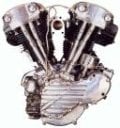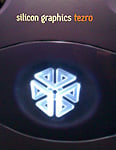Update : new hinv at the end of the thread
Code:
IRIS 1# hinv -vm
Location: /hw/module/1/slot/n2/node
IP31PIMM8MB Board: barcode JRN215 part 030-1401-002 rev C
IP31 Board: barcode JHB065 part 030-1255-004 rev A
Location: /hw/module/1/slot/n1/node
MODULEID Board: barcode K0009874 part rev
IP31PIMM8MB Board: barcode DPX714 part 030-1401-002 rev B
IP31 Board: barcode JRS408 part 030-1255-004 rev A
4P1G5_MPLN Board: barcode DKA368 part 013-1839-001 rev E
Location: /hw/module/1/slot/io4/kona
GE16-4 Board: barcode HKM723 part 030-1398-001 rev B
Location: /hw/module/1/slot/io6/divo
DIVO Board: barcode DGR497 part 030-1046-002 rev H
Location: /hw/module/1/slot/io1/baseio
BASEIO Board: barcode HLZ610 part 030-0734-002 rev N
MIO Board: barcode HPF340 part 030-0880-003 rev F
Location: /hw/module/1/slot/io3/mscsi
MSCSI Board: barcode EDV974 part 030-1243-001 rev C
4 300 MHZ IP27 Processors
CPU: MIPS R12000 Processor Chip Revision: 2.3
FPU: MIPS R12010 Floating Point Chip Revision: 2.3
CPU 0 at Module 1/Slot 2/Slice A: 300 Mhz MIPS R12000 Processor Chip (enabled)
Processor revision: 2.3. Scache: Size 8 MB Speed 200 Mhz Tap 0xa
CPU 1 at Module 1/Slot 2/Slice B: 300 Mhz MIPS R12000 Processor Chip (enabled)
Processor revision: 2.3. Scache: Size 8 MB Speed 200 Mhz Tap 0xa
CPU 2 at Module 1/Slot 1/Slice A: 300 Mhz MIPS R12000 Processor Chip (enabled)
Processor revision: 2.3. Scache: Size 8 MB Speed 200 Mhz Tap 0xa
CPU 3 at Module 1/Slot 1/Slice B: 300 Mhz MIPS R12000 Processor Chip (enabled)
Processor revision: 2.3. Scache: Size 8 MB Speed 200 Mhz Tap 0xa
Main memory size: 8192 Mbytes
Instruction cache size: 32 Kbytes
Data cache size: 32 Kbytes
Secondary unified instruction/data cache size: 8 Mbytes
Memory at Module 1/Slot 82: 4096 MB (enabled)
Bank 0 contains 512 MB (Standard) DIMMS (enabled)
Bank 1 contains 512 MB (Standard) DIMMS (enabled)
Bank 2 contains 512 MB (Standard) DIMMS (enabled)
Bank 3 contains 512 MB (Standard) DIMMS (enabled)
Bank 4 contains 512 MB (Standard) DIMMS (enabled)
Bank 5 contains 512 MB (Standard) DIMMS (enabled)
Bank 6 contains 512 MB (Standard) DIMMS (enabled)
Bank 7 contains 512 MB (Standard) DIMMS (enabled)
Memory at Module 1/Slot 81: 4096 MB (enabled)
Bank 0 contains 512 MB (Standard) DIMMS (enabled)
Bank 1 contains 512 MB (Standard) DIMMS (enabled)
Bank 2 contains 512 MB (Standard) DIMMS (enabled)
Bank 3 contains 512 MB (Standard) DIMMS (enabled)
Bank 4 contains 512 MB (Standard) DIMMS (enabled)
Bank 5 contains 512 MB (Standard) DIMMS (enabled)
Bank 6 contains 512 MB (Standard) DIMMS (enabled)
Bank 7 contains 512 MB (Standard) DIMMS (enabled)
Integral SCSI controller 3: Version QL1040B (rev. 2), differential
Integral SCSI controller 4: Version QL1040B (rev. 2), differential
Integral SCSI controller 2: Version QL1040B (rev. 2), differential
Integral SCSI controller 5: Version QL1040B (rev. 2), differential
Integral SCSI controller 1: Version QL1040B (rev. 2), single ended
Integral SCSI controller 0: Version QL1040B (rev. 2), single ended
Disk drive: unit 1 on SCSI controller 0 (unit 1)
Disk drive: unit 2 on SCSI controller 0 (unit 2)
CDROM: unit 6 on SCSI controller 0
IOC3/IOC4 serial port: tty1
IOC3/IOC4 serial port: tty2
IOC3/IOC4 serial port: tty3
IOC3/IOC4 serial port: tty4
IOC3 parallel port: plp1
Graphics board: InfiniteReality2E
Integral Fast Ethernet: ef0, version 1, module 1, slot io1, pci 2
Iris Audio Processor: version RAD revision 7.0, number 1
Origin BASEIO board, module 1 slot 1: Revision 4
PCI Adapter ID (vendor 4265, device 2) pci slot 0
PCI Adapter ID (vendor 4265, device 2) pci slot 2
Origin MSCSI board, module 1 slot 3: Revision 3
PCI Adapter ID (vendor 4215, device 4128) pci slot 0
PCI Adapter ID (vendor 4215, device 4128) pci slot 1
PCI Adapter ID (vendor 4215, device 4128) pci slot 2
PCI Adapter ID (vendor 4215, device 4128) pci slot 3
PCI Adapter ID (vendor 4265, device 3) pci slot 6
PCI Adapter ID (vendor 4265, device 3) pci slot 2
PCI Adapter ID (vendor 4215, device 4128) pci slot 0
PCI Adapter ID (vendor 4215, device 4128) pci slot 1
PCI Adapter ID (vendor 4265, device 5) pci slot 7
IOC3/IOC4 external interrupts: 1
HUB in Module 1/Slot 2: Revision 5 Speed 100.00 Mhz (enabled)
HUB in Module 1/Slot 1: Revision 5 Speed 100.00 Mhz (enabled)
IP27prom in Module 1/Slot n2: Revision 6.129
IP27prom in Module 1/Slot n1: Revision 6.129
IO6prom on Global Master Baseio in Module 1/Slot io2: Revision 6.129
Location: /hw/module/1/slot/n2/node
IP31PIMM8MB Board: barcode JRN215 part 030-1401-002 rev C
IP31 Board: barcode JHB065 part 030-1255-004 rev A
Location: /hw/module/1/slot/n1/node
MODULEID Board: barcode K0009874 part rev
IP31PIMM8MB Board: barcode DPX714 part 030-1401-002 rev B
IP31 Board: barcode JRS408 part 030-1255-004 rev A
4P1G5_MPLN Board: barcode DKA368 part 013-1839-001 rev E
Location: /hw/module/1/slot/io4/kona
GE16-4 Board: barcode HKM723 part 030-1398-001 rev B
Location: /hw/module/1/slot/io6/divo
DIVO Board: barcode DGR497 part 030-1046-002 rev H
Location: /hw/module/1/slot/io1/baseio
BASEIO Board: barcode HLZ610 part 030-0734-002 rev N
MIO Board: barcode HPF340 part 030-0880-003 rev F
Location: /hw/module/1/slot/io3/mscsi
MSCSI Board: barcode EDV974 part 030-1243-001 rev C
4 300 MHZ IP27 Processors
CPU: MIPS R12000 Processor Chip Revision: 2.3
FPU: MIPS R12010 Floating Point Chip Revision: 2.3
CPU 0 at Module 1/Slot 2/Slice A: 300 Mhz MIPS R12000 Processor Chip (enabled)
Processor revision: 2.3. Scache: Size 8 MB Speed 200 Mhz Tap 0xa
CPU 1 at Module 1/Slot 2/Slice B: 300 Mhz MIPS R12000 Processor Chip (enabled)
Processor revision: 2.3. Scache: Size 8 MB Speed 200 Mhz Tap 0xa
CPU 2 at Module 1/Slot 1/Slice A: 300 Mhz MIPS R12000 Processor Chip (enabled)
Processor revision: 2.3. Scache: Size 8 MB Speed 200 Mhz Tap 0xa
CPU 3 at Module 1/Slot 1/Slice B: 300 Mhz MIPS R12000 Processor Chip (enabled)
Processor revision: 2.3. Scache: Size 8 MB Speed 200 Mhz Tap 0xa
Main memory size: 8192 Mbytes
Instruction cache size: 32 Kbytes
Data cache size: 32 Kbytes
Secondary unified instruction/data cache size: 8 Mbytes
Memory at Module 1/Slot 82: 4096 MB (enabled)
Bank 0 contains 512 MB (Standard) DIMMS (enabled)
Bank 1 contains 512 MB (Standard) DIMMS (enabled)
Bank 2 contains 512 MB (Standard) DIMMS (enabled)
Bank 3 contains 512 MB (Standard) DIMMS (enabled)
Bank 4 contains 512 MB (Standard) DIMMS (enabled)
Bank 5 contains 512 MB (Standard) DIMMS (enabled)
Bank 6 contains 512 MB (Standard) DIMMS (enabled)
Bank 7 contains 512 MB (Standard) DIMMS (enabled)
Memory at Module 1/Slot 81: 4096 MB (enabled)
Bank 0 contains 512 MB (Standard) DIMMS (enabled)
Bank 1 contains 512 MB (Standard) DIMMS (enabled)
Bank 2 contains 512 MB (Standard) DIMMS (enabled)
Bank 3 contains 512 MB (Standard) DIMMS (enabled)
Bank 4 contains 512 MB (Standard) DIMMS (enabled)
Bank 5 contains 512 MB (Standard) DIMMS (enabled)
Bank 6 contains 512 MB (Standard) DIMMS (enabled)
Bank 7 contains 512 MB (Standard) DIMMS (enabled)
Integral SCSI controller 3: Version QL1040B (rev. 2), differential
Integral SCSI controller 4: Version QL1040B (rev. 2), differential
Integral SCSI controller 2: Version QL1040B (rev. 2), differential
Integral SCSI controller 5: Version QL1040B (rev. 2), differential
Integral SCSI controller 1: Version QL1040B (rev. 2), single ended
Integral SCSI controller 0: Version QL1040B (rev. 2), single ended
Disk drive: unit 1 on SCSI controller 0 (unit 1)
Disk drive: unit 2 on SCSI controller 0 (unit 2)
CDROM: unit 6 on SCSI controller 0
IOC3/IOC4 serial port: tty1
IOC3/IOC4 serial port: tty2
IOC3/IOC4 serial port: tty3
IOC3/IOC4 serial port: tty4
IOC3 parallel port: plp1
Graphics board: InfiniteReality2E
Integral Fast Ethernet: ef0, version 1, module 1, slot io1, pci 2
Iris Audio Processor: version RAD revision 7.0, number 1
Origin BASEIO board, module 1 slot 1: Revision 4
PCI Adapter ID (vendor 4265, device 2) pci slot 0
PCI Adapter ID (vendor 4265, device 2) pci slot 2
Origin MSCSI board, module 1 slot 3: Revision 3
PCI Adapter ID (vendor 4215, device 4128) pci slot 0
PCI Adapter ID (vendor 4215, device 4128) pci slot 1
PCI Adapter ID (vendor 4215, device 4128) pci slot 2
PCI Adapter ID (vendor 4215, device 4128) pci slot 3
PCI Adapter ID (vendor 4265, device 3) pci slot 6
PCI Adapter ID (vendor 4265, device 3) pci slot 2
PCI Adapter ID (vendor 4215, device 4128) pci slot 0
PCI Adapter ID (vendor 4215, device 4128) pci slot 1
PCI Adapter ID (vendor 4265, device 5) pci slot 7
IOC3/IOC4 external interrupts: 1
HUB in Module 1/Slot 2: Revision 5 Speed 100.00 Mhz (enabled)
HUB in Module 1/Slot 1: Revision 5 Speed 100.00 Mhz (enabled)
IP27prom in Module 1/Slot n2: Revision 6.129
IP27prom in Module 1/Slot n1: Revision 6.129
IO6prom on Global Master Baseio in Module 1/Slot io2: Revision 6.129
Code:
IRIS 2# /usr/gfx/gfxinfo -v
Graphics board 0 is "KONAL" graphics.
Managed (":0.0") 1280x1024
Display has 2 channels
4 GEs (of 4), occmask = 0x0f
4MB external BEF ram, 32bit path
2 RM7 boards (of 2) 1/1/0/0
Texture Memory: 64MB/64MB/-/-
Large pixel depth
32K cmap
brd: 80f61806 3020c06/3020c06/-/- f9391002
ge: 0 14832057 24731057 14231057
rm0: 15032057 15431057
4631057 1/1/1/1
4d31057 2/2/2/2/2/2/2/2
4938057 4/4/4/4/4/4/4/4/4/4/4/4/4/4/4/4/4/4/4/4
rm1: 15032057 15431057
4631057 1/1/1/1
4d31057 2/2/2/2/2/2/2/2
4938057 4/4/4/4/4/4/4/4/4/4/4/4/4/4/4/4/4/4/4/4
dg: 05532057
5838057 1/1/1/1
5631057 0/0
GE: NIC #: 0000.0038.c463 (family: 0b)
Serial #: HKM723
Part #: 030-1398-001
KT: No NIC serial number available.
RM0: NIC #: 0000.000e.439a (family: 0b)
Serial #: EDW101
Part #: 030-1054-001
TM0: NIC #: 0000.000e.3e8a (family: 0b)
Serial #: EDY125
Part #: 030-1053-001
RM1: NIC #: 0000.000e.43b6 (family: 0b)
Serial #: EDW080
Part #: 030-1054-001
TM1: NIC #: 0000.000e.3e9d (family: 0b)
Serial #: EDY114
Part #: 030-1053-001
RM2: No NIC serial number available.
TM2: No NIC serial number available.
RM3: No NIC serial number available.
TM3: No NIC serial number available.
BP: No NIC serial number available.
DG: NIC #: 0000.0015.dfe9 (family: 0b)
Serial #: FER904
Part #: 030-1055-001
DGOPT:No NIC serial number available.
(Could not contact X server; thus, no XSGIvc information available)
Graphics board 0 is "KONAL" graphics.
Managed (":0.0") 1280x1024
Display has 2 channels
4 GEs (of 4), occmask = 0x0f
4MB external BEF ram, 32bit path
2 RM7 boards (of 2) 1/1/0/0
Texture Memory: 64MB/64MB/-/-
Large pixel depth
32K cmap
brd: 80f61806 3020c06/3020c06/-/- f9391002
ge: 0 14832057 24731057 14231057
rm0: 15032057 15431057
4631057 1/1/1/1
4d31057 2/2/2/2/2/2/2/2
4938057 4/4/4/4/4/4/4/4/4/4/4/4/4/4/4/4/4/4/4/4
rm1: 15032057 15431057
4631057 1/1/1/1
4d31057 2/2/2/2/2/2/2/2
4938057 4/4/4/4/4/4/4/4/4/4/4/4/4/4/4/4/4/4/4/4
dg: 05532057
5838057 1/1/1/1
5631057 0/0
GE: NIC #: 0000.0038.c463 (family: 0b)
Serial #: HKM723
Part #: 030-1398-001
KT: No NIC serial number available.
RM0: NIC #: 0000.000e.439a (family: 0b)
Serial #: EDW101
Part #: 030-1054-001
TM0: NIC #: 0000.000e.3e8a (family: 0b)
Serial #: EDY125
Part #: 030-1053-001
RM1: NIC #: 0000.000e.43b6 (family: 0b)
Serial #: EDW080
Part #: 030-1054-001
TM1: NIC #: 0000.000e.3e9d (family: 0b)
Serial #: EDY114
Part #: 030-1053-001
RM2: No NIC serial number available.
TM2: No NIC serial number available.
RM3: No NIC serial number available.
TM3: No NIC serial number available.
BP: No NIC serial number available.
DG: NIC #: 0000.0015.dfe9 (family: 0b)
Serial #: FER904
Part #: 030-1055-001
DGOPT:No NIC serial number available.
(Could not contact X server; thus, no XSGIvc information available)
_________________









 R4600PC 133 MHz
R4600PC 133 MHz



 SGI Indigo 2 R8K75 TEAL Extreme 256MB,
SGI Indigo 2 R8K75 TEAL Extreme 256MB,
 SGI Indigo 2 R10K 195 Solid Impact 256MB, MAX Impact Pending
SGI Indigo 2 R10K 195 Solid Impact 256MB, MAX Impact Pending






















